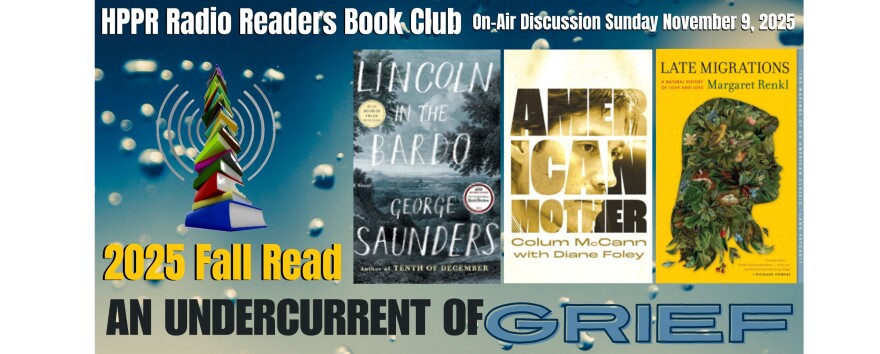This is Mike Strong, in Hays, for HPPR The book is “Winesburg, OH” by Sherwood Anderson.
Clyde, Ohio is roughly halfway between Cleveland on the south of Lake Erie, and Toledo at the far west end of Lake Erie. Located in Sandusky County, Clyde is about seven or eight miles, give or take, south of Sandusky Bay which empties into the lake. Driving into Clyde, one of the city-limit signs is in two parts, or at least was. The top part reading, “Clyde, corporation limit” and the bottom part reading, “Anderson’s Winesburg, Ohio.”
Clyde is the real town Sherwood Anderson grew up in. Winesburg is a fictional name. Few people today know or care who Anderson was, or know of “Winesburg, OH.”
Yet, there was a time that Anderson’s reputation was such that future social literary critic Irving Howe spent his last weekend pass from the Army, on a pilgrimage to Clyde, before he shipped out to WWII. At one time both Hemingway and Faulkner praised Anderson’s writing.
Howe, on this weekend pass, tried to talk to people in Clyde about Anderson. They were indifferent, he said, noting that Anderson would not have been surprised. After the war, in 1951, Howe would publish a critical biography of Anderson.
“Winesburg, OH” was Sherwood Anderson’s third book, the book that made his reputation. It was written at the very end of WWI and published in 1919, the beginning of the flapper era and loosened ideas about sex and new ideas about psychoanalysis, which find their way into fiction.
Anderson seems to be analyzing himself. The character of George Willard, the young newspaper reporter seems to be based on Anderson. Other characters, too, who seem loosely based on people he knew.
In the story titled, “The Teacher,” we see Anderson’s tension and frustration in the interplay between the young reporter and the somewhat older teacher, Kate Swift, based on a roughly similar teacher in Anderson’s own life. As Anderson writes it, each wonders how to get to a romantic relationship, then pushes it away.
The description of an embrace tells how Kate Swift let George Willard take her into his arms. The air is heavy, the strength goes out of Kate’s body, she leans against a low counter and waits. When George puts his hand on her shoulder, “she turned and let her body fall heavily against him.”
So, now the romance takes off? Nope. George is confused. First George automatically returns Kate’s embrace, but suddenly stiffens and now Kate uses her fists to hit him in the face, before running away. George is alone.
Then we spend a paragraph with George thinking of Kate until he falls asleep muttering that he - “missed something Kate Swift was trying to tell me.” Genre terse talk and understatement that seems like pre-noir dialog.
It is meant to be serious, but I had to laugh. I had just been talking about the BBC series “Grantchester,” where the vicar character, always dives into the wrong relationship, passionately, and around the corner is a possible “just right” relationship, doomed, of course.
The tortured, always-wrong, romance has become such a stock item anymore that it almost turns into a send up, unintended. Same for the BBC’s “Morse” and its wonderfully done prequel “Endeavour.” Each romantic interest is doomed.
The object of love either turns out to be the villain, has a devastating split or meets a tragic demise. They never seem to just get along. The characters have to be poetically punished.
Anderson writes, “Then he slept and in all Winesburg he was the last soul on that winter night to go to sleep.” Anderson’s next chapter? “Loneliness.”
This is Mike Strong, in Hays, for HPPR Radio Readers Book Club
Note: "Winesburg, Ohio" used to be considered one of the most significant novels in America, a dead lock on the reading lists of most universities. I'm not sure that it's even read anymore. The Midwest of Anderson's time was knee-deep in grotesques. Today they still exist. They meet at Walmart 24/7. Sherwood Anderson was a strange man, who led a strange, not always happy life. He befriended a then young Hemingway, helping him on his way to a successful career. Hemingway, in return, made fun of Anderson, writing a parody of his style called "The Torrents of Spring". The oddest part of this, as I see it, is that Torrents remains the purest example of the famous Hemingway style--which indicates that Hemingway created his "style" by cannibalizing Sherwood Anderson. When you read Winesburg, you will see noticeable elements of Hemingway's "voice". It's the voice of Sherwood Anderson.
References
Winesburg, Ohio (Dover Thrift Editions: Short Stories) Kindle Edition by Sherwood Anderson
Sherwood Anderson - A Biographical And Critical Study Paperback – January 1, 1966 by Irving Howe (Author) https://www.amazon.com/Sherwood-Anderson-Biographical-Critical-Study/dp/B000IVDHUG/ref=sr_1_26?keywords=Irving+Howe
https://en.wikipedia.org/wiki/Sherwood_Anderson
Howe, Irving (1951). Sherwood Anderson. New York: William Sloane Associates.









